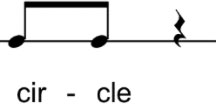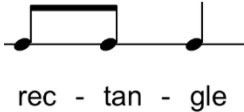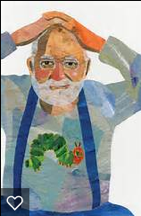Grade K:Day and Night
Grade K: Day and Night
Unit Description
This Kindergarten Unit uses art to address the differences between the day and night sky and the observable changes in the sky over a 24 hour period. In Project 1 students will be creating a stop motion video illustrating the changes in the day and night sky over time. In Project 2 students will analyze and interpret music compositions to represent daytime and nighttime. In Project 3 students will create dramatic scenes that depict activities during the day or night. The goal of this unit is for students to approach learning using various art forms as they explore the day and night sky and the changes that occur over time.
Unit Essential Question
How can I observe the changes of the sky over time?
How can I identify the differences between the day and night sky?
Why is important for me to know the changes between the day and night sky?
How do the changes in the sky occur during daytime and night time?
Real World Context
It is important for students to have an understanding of why the sky changes during the day and night.
Cross-Cutting Interdisciplinary Concepts
Changes over time
Patterns
Projects
Project 1: Day and Night Stop Motion
In this project, students will use media arts to create a stop motion video based on the changes over time in the day and night sky. Students will work with an older grade level (suggested 2nd grade because of similarities in science standards) to create background illustrations and settings for their video. Students will illustrate a storyboard using 3D modeling clay to sequence the changes from day to night sky and night to day sky. Both grade levels will work together to create a script for each section of the storyboard to use while producing the stop motion film. Students will use peer editing to support one another in the writing process. After creating the stop motion film, students will present their projects for others to view.
Project 2: Music and Movement
In this project students use music and movement to explore day and night. Students will begin by comparing and contrasting four very different styles of music. Students will apply their understanding of music vocabulary to express what they hear in the musical piece. As a class, the students will choose which pieces best represent daytime and which pieces best represent nighttime. Once each label has been placed on the musical choices, in groups, students will begin to interpret the music using dance movements. Students should be able to explain their movement choice based on movement in the day and night time.
Project 3: My Day Drama
In this project, students will write and perform a dramatization of day and night. Students will explore drama strategies such as tableau, pantomime and movement. Students will integrate both writing and the digital arts into their project. Classroom performances will take place and higher order thinking skills such as comparing and contrasting will be focal during this project. These activities also have the option to be recorded with Green Screen by Do Ink and put together in iMovie, Movie Maker or Photostory.
Project Essential Questions
PROJECT 1:
How can I use technology to represent the observable changes in the day and night sky?
PROJECT 2:
How can I use the performing arts to compare and contrast the daytime sky with the nighttime sky? How can music and movement be used to explore activity in the daytime and nighttime?
PROJECT 3:
How can I use drama strategies to dramatize daytime activities and nighttime activities?
What conclusions can we draw from our observations of the day and night sky?
Standards
Curriculum Standards
SKE1 Obtain, evaluate, and communicate observations about time patterns (day to night and night to day) and objects (sun, moon, stars) in the day and night sky.
- Ask questions to classify objects according to those seen in the day sky, the night sky, and both.
- Develop a model to communicate the changes that occur in the sky during the day, as day turns into night, during the night, and as night turns into day using pictures and words.
ELAGSEKW3 Use a combination of drawing, dictating, and writing to narrate a single event or several loosely linked events, tell about the events in the order in which they occurred, and provide a reaction to what happened.
ELAGSEKW5 With guidance and support from adults, respond to questions and suggestions from peers and add details to strengthen writing as needed.
ELAGSEKW6 With guidance and support from adults, use a variety of tools to produce and publish writing, including digital tools in collaboration with peers.
ELAGSEKSL1 Participate in collaborative conversations with diverse partners about kindergarten topics and texts with peers and adults in small and larger groups.
- Follow agreed-upon rules for discussions (e.g., listening to others and taking turns speaking about the topics and texts under discussion). b. Continue a conversation through multiple exchanges.
ELAGSEKSL6 Speak audibly and express thoughts, feelings, and ideas clearly.
ELAGSEKL2 Demonstrate command of the conventions of standard English capitalization, punctuation, and spelling when writing.
- Capitalize the first word in a sentence and the pronoun I.
Arts Standards
VAKPR.2 Understands and applies media, techniques, and processes of two-dimensional works of art using tools and materials in a safe and appropriate manner to develop skills.
VAKPR.3 Understands and applies media, techniques, and processes of three-dimensional works of art (e.g., ceramics, sculpture, crafts, and mixed- media) using tools and materials in a safe and appropriate manner to develop skills.
MA:Cr1.K Discover and share ideas for media artworks using play and experimentation
MA: Cr2.K With guidance, use ideas to form plans or models for media arts productions
MA:Pr5.1.K (a) identify and demonstrate basic skills, such as handling tools, making choices, and cooperating in creating media artworks
MA:Pr5.1.K Practice, discover, and share how media arts creation tools work
MA:Cn11.1.K (b) With guidance, internet safety and appropriately with media arts tools and environments
VA:Cr1.1.Ka Engage in exploration and imaginative play with materials
VA:Cr2.1.Ka Through experimentation, build skills in variations media and approaches to art-making
VA:Cr2.2.Ka (a) identify safe and non-toxic materials, tools, and equipment
VA: Cr2.3.Ka Create art that represents natural and constructed environments
VA:Re.7.2.Ka Describe what an image represents
DA:Cr2.1.K (b) Express an idea, feeling, or image, through improvised movement moving alone or with a partner.
MU:Pr4.2.K (a) With guidance, explore and demonstrate awareness of music contrasts (such as high/low, loud/soft, same/different) in a variety of music selected for performance.
MU:Pr4.3.K (a) With guidance, demonstrate awareness of expressive qualities (such as voice quality, dynamics, and tempo) that support the creators’ expressive intent.
TH:Cr2.K (a) With prompting and support, interact with peers and contribute to dramatic play or a guided drama experience (e.g. process drama, story drama, creative drama).
TH:Cr2.K (b) With prompting and support, express original ideas in dramatic play or a guided drama experience (e.g. process drama, story drama, creative drama).
TH:Re9.1.K (a) With prompting and support, actively engage with others in dramatic play or a guided drama experience (e.g. process drama, story drama, creative drama).
Character Education
Components
Students pair with an older grade level to create a setting for the stop motion video. While paired students will write a script and peer edit their script. Groups will present their projects for others.
Character Attributes Addressed During Unit
- Cooperation
- Respect for self and others
Summative Assessments
- Pre/ Post Test
- Project 1 Rubric
- Project 2 Rubric
- Project 3 Rubric
Partnering with Fine Arts Teachers
Music Teacher:
- Introduce student to vocabulary
Visual Arts Teacher:
- Introduce students to a variety of mediums
- Introduce students to a variety of techniques
- Introduce vocabulary
Physical Education/Dance Teacher:
- Introduce levels, motions, and gestures
Appendix (See Project Downloads)
- Pre/Post-test
- Project 1 Rubric
- Project 1 Writing Rubric
- Project 1 Storyboard
- Project 1 Script
- Project 1 Sentence Frame
- Project 1 Art Images
- Project 2 Rubric
- Project 3 Rubric
- Project 3 Day and Night Backdrops
Credits
Arts in Education--Model Development and Dissemination Grants Program
Cherokee County (GA) School District and ArtsNow, Inc.
Ideas contributed and edited by:
Chelsea Bailey, Heather Burgess, Silka Simmons, Portia Whitlow, Edited by Jessica Espinoza, Edited by Dr. Carla Cohen
Grade K: Day and Night
Additional Resources
Books
- What Makes Day and Night by Franklyn M. Branley
- Day and Night by Robin Nelson
- Day and Night (ebook) by Teddy Newton
- Little Owl’s Day (ebook) by Divya Srinivasan
- Little Owl’s Night (ebook) by Divya Srinivasan
- National Geographic Readers: Day and Night by Shira Night
- Papa, Please Get the Moon for Me by Eric Carle
- The Big Red Barn by Margaret Wise Brown
Websites
- http://www.learn.columbia.edu/monet/swf/
- https://www.youtube.com/watch?v=62HkDo0MY2Q
- https://www.youtube.com/watch?v=gZub1ESIL44
- https://www.youtube.com/watch?v=_arw0XF1G4k
- https://gpb.pbslearningmedia.org/resource/7fa19643-d979-4e76-86cb-c370592d155c/daytimenighttime/#.WSL7_1KZM0o
- https://www.youtube.com/watch?v=TUJFBMM9Xig
- https://www.youtube.com/watch?v=y5f5jZc61D4
- https://www.youtube.com/watch?v=upHVkPUqEts
- https://www.youtube.com/watch?v=gEYBNN5oeo8
- https://vimeo.com/36466564
Extension
- Field Trip to Tellus Museum: Day & Night Program (http://tellusmuseum.org/wp-content/uploads/2015/08/SIM-updated-082715.pdf)
Additional Videos
Tableau









 or
or 



 Remedial/EL Students:
Remedial/EL Students: